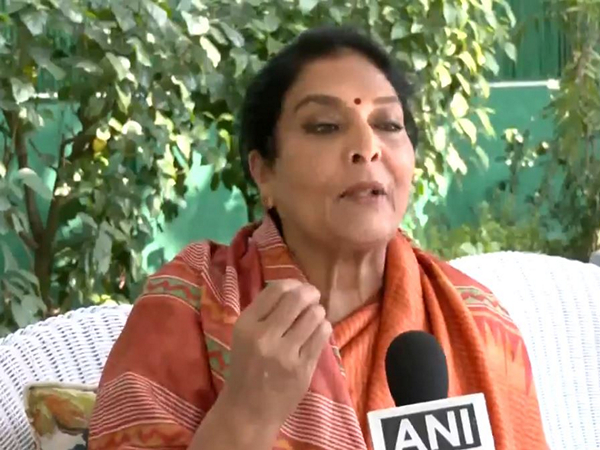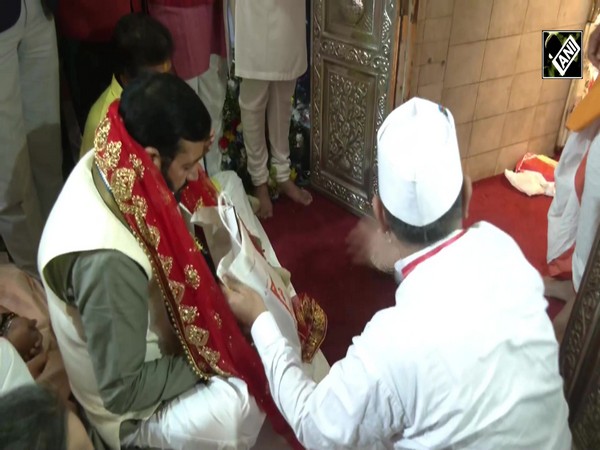Druk Zangri Khamar: Story of traditional dance on Bhutan mountains
Aug 26, 2023

Thimphu [Bhutan], August 26 : 'Drunk Zangri Khamar' happens to be a hidden treasure known to a few, that lies in the heart of Bhutan’s mountains. It holds a wealth of history and a shared heritage spanning centuries, Bhutan Live reported.
"A tale of rare opportunity and profound connection unfolds as a group of pilgrims embarks on a journey that seems as improbable as the blind turtle’s chance encounter with a perfectly fitting log. Just as the turtle surfaces every hundred years, a dedicated assembly of seekers managed to pass through the narrow eye of a needle – not to float in the ocean, but to engage with the dakini’s dance. Together, they ventured into the remote northeastern reaches of Bhutan, drawn by the elusive allure of Druk Zangri Khamar," Bhutan Live reported.
The Vajrayana community lives in Bhutan mountains and breathes the teachings of the 11th-century Tibetan yogini and lama, Machig Labdrön
This community traces its origins back to a group of 30 Tibetan refugees who foresaw the impending destruction of their heritage and sought refuge in Bhutan in 1952.
Their exodus from Zangri Khamar in Tibet, the very seat of Machig Labdrön’s wisdom, marked the beginning of a journey to preserve their spiritual legacy. At the core of their practice is the chod ritual, a distinctive method to comprehend the Buddha’s teachings on Emptiness through offerings and dance. This radical approach envisions nourishing one’s own inner obstacles and ego, ultimately fostering unity, Bhutan Live reported.
Trulshik Rigdzin Lingpa, the leader of the original 30, laid the foundation for this community, guided by visions of dakinis. Through his Bhutanese disciple Togden Tsewang Choepel, the prophetic vision took shape as Druk Zangri Khamar on ancestral lands granted by the Dharma king.
Under the stewardship of Lama Rigdzin Longyang Rinpoche, recognized as the reincarnation of Trülshik Rigdzin Lingpa, the community flourished.
In 2015, a vibrant temple dedicated to the lineage of Machig Labdrön emerged, adorned with textiles, murals, and statuary. Additionally, a small monastery welcomed young boys to receive monastic education, as per Bhutan Live.
A pilgrimage from Tara Mandala, an international sangha founded by Western female lama Tsultrim Allione, further intertwined the threads of these communities. Renowned for her devotion to Machig Labdrön’s teachings, Lama Tsultrim and her students journeyed to Druk Zangri Khamar in 2017. The connection between these communities ignited.
Lama Tsultrim’s fascination with the Dakini Cham — a series of ritual dances integral to the practices — led her to a groundbreaking proposition. These dances, typically performed by men, were to be taken up by the women of Druk Zangri Khamar, Bhutan Live reported.
A second pilgrimage in April 2023, consisting of 23 individuals, marked a significant chapter. Their mission was to learn, document, and propagate the chöd melodies, liturgy, and dances.
The pilgrims embarked on an immersive experience, learning from the gomchenma, the feminine practitioners who had been performing the dances since 2017. Their journey spanned dance rehearsals, deep meditation, and connection with the local community.
The practices echoed the pure vision of Machig Labdron, merging chod drumming, rhythmic movements, and meditation. The rigorous training bore fruit in the form of recordings and notes to further refine these sacred practices, according to Bhutan Live.
The pinnacle arrived with the Rinchen Trengwa Chöd and jinsek ceremonies, culminating in the dance rituals that had been ardently studied. In the temple’s Tara shrine room, the gomchenma metamorphosed into dakinis, donning ornate costumes embodying the Wisdom Dakini Mandala’s colors.
The ceremony marked a bridge between cultures and spirits, as unity blossomed through shared traditions and dances.
“As dusk settled, the vibrant energy of ‘Tashi Leybey’, a Bhutanese folk dance, reverberated. Joined in a circle, hands intertwined, the pilgrims and the community celebrated the union of diverse souls united by a sacred dance. This journey, like the blind turtle’s unlikely emergence, led these travellers through the eye of a needle to dance with the dakini, transcending oceans of differences to merge in joy,” Bhutan Live reported.




















